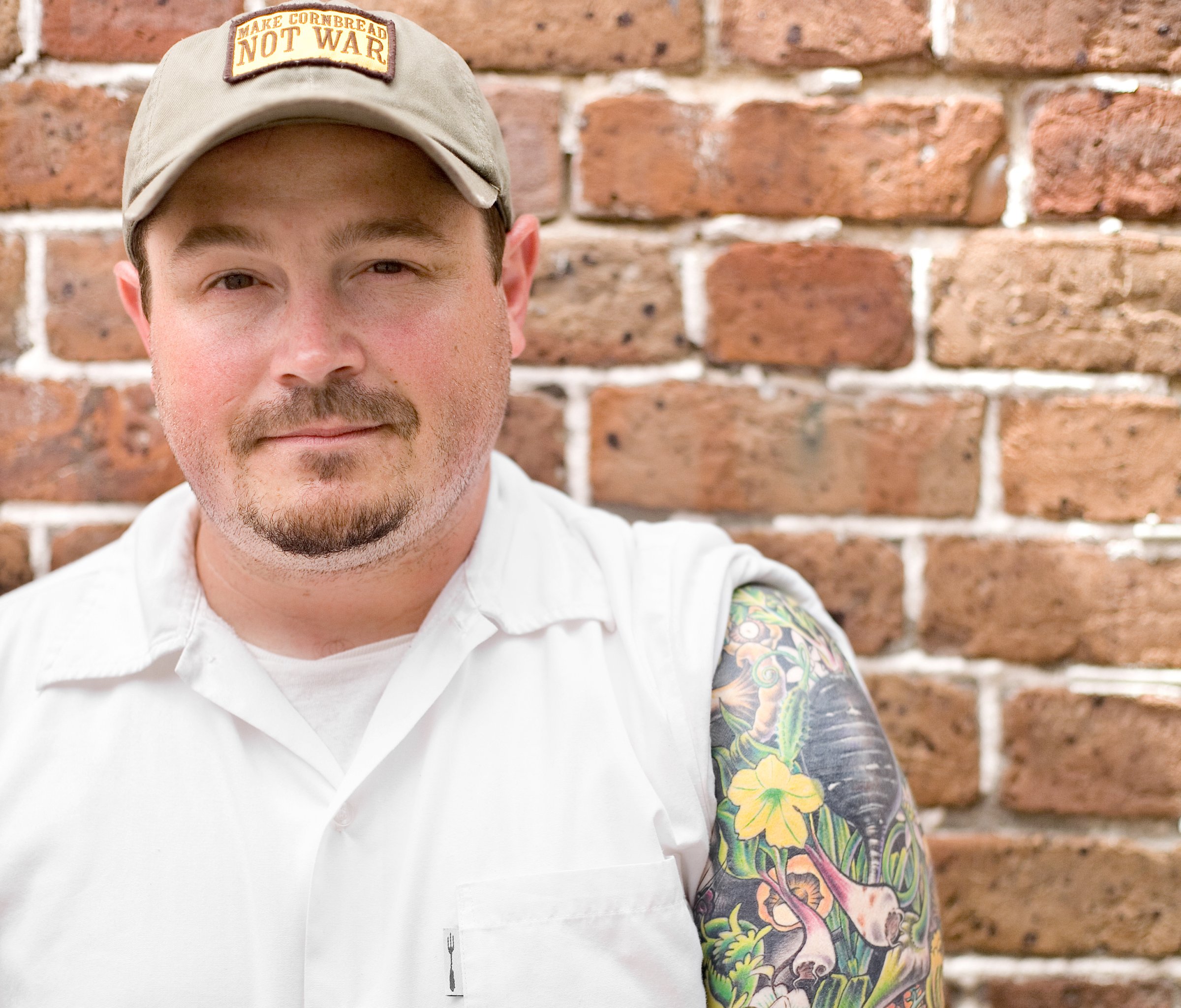
“That’s a good twenty grand of corn-flavored water,” Sean Brock says as he pours me a drink from another bottle of bourbon. He’s got several vintage Pappy Van Winkles on the small side table in his apartment in Nashville, eventually lining up 13 bottles on the kitchen counter. He points out one or two or three –19, 20, 23-year olds — that are worth a couple of thousand dollars each. Very few have been opened but he says not to worry. These aren’t the collectibles. They are his “drinking bourbons.” And so we do. I’ve never been to Nashville before. I love it here.
It was around midnight but the honky-tonks were still playing when my friend Aaron and I walked down to Brock’s place from the chef’s restaurant on a hill about 10 minutes away. It had been freezing when we started out the evening a little before eight, walking from our downtown hotel to Husk, the Nashville branch of Brock’s Charleston original. About three hours and 20 courses later, the cold was almost bearable and, responding to Brock’s request and his invitation, we picked up a pack of smokes for him as we headed to his apartment for drinks.
The first time I met Sean Brock was in New York City. He had been there last year for the James Beard Awards, the so-called Oscars of the restaurant industry. Up for chef of the year for his other Charleston restaurant, McCrady’s, he was nice enough then but, as a nominee for the top individual prize, a little preoccupied (David Chang of Momofuku would win). In Nashville, he was clearly more relaxed even though he had to hobble downstairs on crutches to the lower level dining room of Husk to say hello. He’d broken his right leg in December after a slip but he wanted to greet Aaron, who is one of the most traveled foodie journalists I know, and who has dined at Brock’s other restaurants before. Let’s grab a drink after dinner, Brock told Aaron, including me in. I had clearly chosen the right traveling companion.
The chef left us to dine and that’s when I felt I really got to know him better. That cold, cold night was a sumptuous introduction to the versatility and eloquence of Brock’s southern cuisine. The region’s cooking is too often caricatured—and badly imitated–up north as broad strokes of butter and cream and sugar slapped on to deal with imprecisions and to cover up indiscipline. But out of Brock’s kitchen came dishes that, while they may have looked familiar or simple, surprised with flavors marshaled to deliciously accurate effect. The pork rib, for example, was not smothered with smoke and monopolized by a single dimension of spice but rather a complexity of sensations as sophisticated as any cuisine. The coriander seeds and scallions, the crust and juiciness of the pork, all reach a kind of pow when you bite into fat. And suddenly, the food of the everyday eater becomes a brief vision of the infinite pleasures of pig heaven.
At his apartment building, Brock meets us on his crutches, house slippers, a black Metallica t-shirt and, once he removes his jacket, a stunningly tattooed left arm. He looks like a warrior from Game of Thrones—with the most convivial of laughs. He tells us that he wanted to become a chef since he was 11 growing up in a family of coal miners in rural Virginia. His inspirations were three television cooks: Julia Child, Jacques Pepin and Martin Yan, and he exudes the same kind of effervescent expertise. He is certainly a master of the fine art of drinking bourbon. As he brings bottle after bottle to his kitchen counter, he says, “Anything below 90 proof is just brown spit.”
That is a truth not universally acknowledged but nonetheless true—in a practical sense. He hands me a glass with a generous layer of 19-year-old, 140 proof Willett bourbon–on the rocks. Each succeeding taste, he says, is different as the ice melts. True that. You can to savor the bourbon as it transforms—and you never really slip into something less than intoxicating. We go through a tasting of a 20-year-old and a 23-year-old Pappy Van Winkle’s Family Reserve. The same truth holds. A sort of corollary to that quote is “there is no such thing as a bad whiskey. Some whiskeys are just better than others.” After several tastings, that truth doesn’t let go. In fact, all the truths began to intermingle in a sea of bourbon.
More Must-Reads From TIME
- The 100 Most Influential People of 2024
- The Revolution of Yulia Navalnaya
- 6 Compliments That Land Every Time
- What's the Deal With the Bitcoin Halving?
- If You're Dating Right Now , You're Brave: Column
- The AI That Could Heal a Divided Internet
- Fallout Is a Brilliant Model for the Future of Video Game Adaptations
- Want Weekly Recs on What to Watch, Read, and More? Sign Up for Worth Your Time
Contact us at letters@time.com